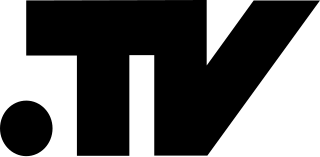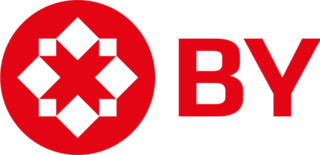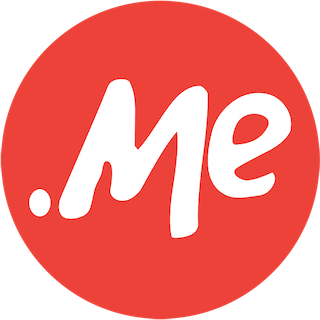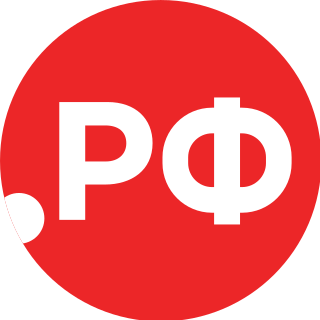
In the Internet, a domain name is a string that identifies a realm of administrative autonomy, authority or control. Domain names are often used to identify services provided through the Internet, such as websites, email services and more. Domain names are used in various networking contexts and for application-specific naming and addressing purposes. In general, a domain name identifies a network domain or an Internet Protocol (IP) resource, such as a personal computer used to access the Internet, or a server computer.
A domain name registry is a database of all domain names and the associated registrant information in the top level domains of the Domain Name System (DNS) of the Internet that enables third party entities to request administrative control of a domain name. Most registries operate on the top-level and second-level of the DNS.
The domain com is a top-level domain (TLD) in the Domain Name System (DNS) of the Internet. Created in the first group of Internet domains at the beginning of 1985, its name is derived from the word commercial, indicating its original intended purpose for subdomains registered by commercial organizations. Later, the domain opened for general purposes.

The domain name .tv is the Internet country code top-level domain (ccTLD) for Tuvalu.

The domain name .org is a generic top-level domain (gTLD) of the Domain Name System (DNS) used on the Internet. The name is truncated from 'organization'. It was one of the original domains established in 1985, and has been operated by the Public Interest Registry since 2003. The domain was originally "intended as the miscellaneous TLD for organizations that didn't fit anywhere else." It is commonly used by non-profit organizations, open-source projects, and communities, but is an open domain that can be used by anyone. The number of registered domains in .org has increased from fewer than one million in the 1990s, to ten million in 2012, and held steady between ten and eleven million since then.

.uk is the Internet country code top-level domain (ccTLD) for the United Kingdom. It was first registered in July 1985, seven months after the original generic top-level domains such as .com and the first country code after .us.

Domain name speculation, popular as domain investing, domain flipping or domaining in professional jargon, is the practice of identifying and registering or acquiring generic Internet domain names as an investment with the intent of selling them later for a profit.
A country code top-level domain (ccTLD) is an Internet top-level domain generally used or reserved for a country, sovereign state, or dependent territory identified with a country code. All ASCII ccTLD identifiers are two letters long, and all two-letter top-level domains are ccTLDs.

.by is the Internet country code top-level domain (ccTLD) for Belarus. It is administered by the Operations and Analysis Centre under the President of the Republic of Belarus. The BY code originates from the ISO code for Byelorussia, the former name of the country. The ccTLD was created for Belarus on 10 May 1994.
.tl is the current country code top-level domain (ccTLD) for East Timor (Timor-Leste). It is administered through the Council of Country Code Administrators (CoCCA) and second-level registration is available through resellers worldwide with no local presence requirement.

.ws is the Internet country code top-level domain (ccTLD) for Samoa. It is administered by SamoaNIC, for the Ministry of Foreign Affairs of the Government of Samoa.

The Internet country code top-level domain (ccTLD) .io is nominally assigned to the British Indian Ocean Territory. The domain is managed by Internet Computer Bureau Ltd, a domain name registry, with registrar services provided by Name.com.

.la is the Internet country code top-level domain (ccTLD) for Laos.
In the Domain Name System (DNS) hierarchy, a second-level domain is a domain that is directly below a top-level domain (TLD). For example, in example.com, example is the second-level domain of the .com TLD.
A domain hack is a domain name that suggests a word, phrase, or name when concatenating two or more adjacent levels of that domain. For example, bir.ds and examp.le, using the fictitious country-code domains .ds and .le, suggest the words birds and example respectively. In this context, the word hack denotes a clever trick, not an exploit or break-in.

.me is the Internet country code top-level domain (ccTLD) for Montenegro.
The Domain Name System of the Internet consists of a set of top-level domains that constitute the root domain of the hierarchical name space and database. In the growth of the Internet, it became desirable to expand the initial set of six generic top-level domains in 1984. As a result, new top-level domain names have been proposed for implementation by ICANN. Such proposals included a variety of models ranging from adoption of policies for unrestricted gTLDs that could be registered by anyone for any purpose, to chartered gTLDs for specialized uses by specialized organizations. In October 2000, ICANN published a list of proposals for top-level domain strings it had received.

The domain name .рф is the Cyrillic country code top-level domain for the Russian Federation, in the Domain Name System of the Internet. In the Domain Name System it has the ASCII DNS name xn--p1ai. The domain accepts only Cyrillic subdomain applications, and is the first Cyrillic implementation of the Internationalizing Domain Names in Applications (IDNA) system. The domain became operational on 13 May 2010. As of 2014 it is the most used internationalized country code top-level domain, with around 900,000 domain names.
Country code top-level domains with commercial licenses are Internet country code top-level domain that have adopted a policy for worldwide commercial use.
An emoji domain is a domain name with one or more emoji in it, for example 😉.tld.











